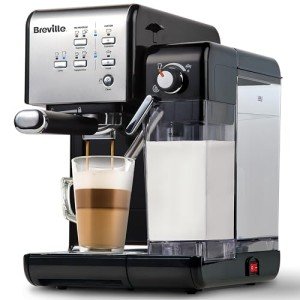5 Tools That Everyone Working In The Heat Exchange Espresso Machines Industry Should Be Utilizing

Heat Exchange Espresso Machines: A Comprehensive Guide
Espresso machines have actually evolved substantially over the years, dealing with the needs of home baristas and coffee professionals alike. Amongst these machines, heat exchange espresso machines have acquired appeal due to their ability to provide consistent performance and remarkable brew quality. In this article, we will check out the functions, advantages, and essential features of heat exchange espresso machines, supplying a detailed understanding for both prospective buyers and coffee lovers.
Understanding Heat Exchange Technology
Heat exchange espresso machines run on a special principle that allows simultaneous water heating for brewing and steaming. They are equipped with a single boiler that uses a heat exchanger system. This feature is considerable as it makes it possible for users to brew espresso while steaming milk simultaneously, promoting efficiency in the coffee-making process.
How Does a Heat Exchange Espresso Machine Work?
The procedure begins with the machine's water inlet filling the boiler. As the water warms up, it turns to steam. The innovative heat exchanger utilizes hot steam to heat additional water in a separate passage developed particularly for the brew group. Espresso Machine Reviews means that water can reach the perfect brewing temperature level without waiting on the boiler to adjust. The crucial steps consist of:
- Water Fill: Water is drawn into the boiler.
- Heating Process: The boiler warms up as water is transformed into steam.
- Heat Exchange: Steam heats up water in the heat exchanger tube.
- Brewing: Water from the heat exchanger is pressed through coffee premises, drawing out the tastes required for a rich espresso.
This procedure enables fast temperature level modifications and improved coffee extraction.
Benefits of Heat Exchange Espresso Machines
Heat exchange espresso machines provide numerous benefits, especially for those looking to optimize their coffee experience. Here are some crucial advantages:
- Simultaneous Brewing and Steaming: Users can brew espresso while steaming milk, making it ideal for busy coffee shops and home baristas who value effectiveness.
- Temperature level Stability: The boiler's steam pressure assists maintain a stable temperature, which is critical for consistent espresso extraction.
- Adaptability: The design permits quick changing in between brewing and steaming, making it easier to develop different coffee drinks, from lattes to cappuccinos.
- User-friendly: Models typically include accessible controls, making it feasible for both beginners and experienced baristas to produce quality drinks.
- Professional Quality: Heat exchange machines are typically used in commercial settings, providing users with high-quality brewing efficiency at home.
Secret Features to Look for in Heat Exchange Espresso Machines
When thinking about the purchase of a heat exchange espresso machine, there are several features that a person should consider:
- Build Quality: Look for machines made from long lasting products, such as stainless steel or brass, ensuring durability.
- Boiler Size: A bigger boiler will hold more water and sustain higher output with time.
- PID Temperature Control: This feature assists keep consistent brew temperatures, which can enhance the coffee-making procedure.
- Group Head Design: Machines with a saturated or semi-saturated group head supply much better temperature level stability.
- Reduce of Use: User-friendly interfaces and intuitive controls boost the total experience for baristas at all ability levels.
- Steam Wand Quality: A good steam wand with proper insulation and versatility permits much better texturing of milk.
- Water Reservoir Size: Depending on your needs, consider how frequently you want to fill up the water reservoir.
Contrast of Popular Heat Exchange Espresso Machines
To better understand the choices readily available in the market, below is a comparison table of some popular heat exchange espresso machines:
| Machine Model | Boiler Size | PID Control | Price Range | User Ratings |
|---|---|---|---|---|
| Profitec Pro 700 | 2.0 L | Yes | ₤ 2,000-₤ 2,500 | 9.5/ 10 |
| Rocket Espresso R58 | 1.8 L | Yes | ₤ 2,400-₤ 2,800 | 9.4/ 10 |
| Elekta Bianca | 1.8 L | Yes | ₤ 2,500-₤ 3,000 | 9.6/ 10 |
| La Spaziale S1 Vivaldi II | 1.5 L | Yes | ₤ 1,800-₤ 2,200 | 9.2/ 10 |
| Bezzera Magica | 1.2 L | No | ₤ 1,600-₤ 1,800 | 9.0/ 10 |
FAQs About Heat Exchange Espresso Machines
What is the primary distinction between a heat exchange and a dual boiler espresso machine?
While both types can brew espresso and steam milk at the same time, dual boiler machines have separate boilers for brewing and steaming. On the other hand, heat exchange machines utilize a single boiler and a heat exchanger to accomplish the exact same function.
Are heat exchange machines appropriate for novices?
Yes! Lots of heat exchange machines are created with easy to use features, making them accessible for newbies. With view and practice, users can quickly produce quality espresso.
What type of upkeep do heat exchange espresso machines require?
Regular upkeep consists of descaling, cleaning up the boiler, examining seals and gaskets, and keeping the group head clean. Regular maintenance guarantees durability and constant efficiency.
Can I use a heat exchange machine for various kinds of coffee beverages?
Definitely! Heat exchange machines permit users to produce a variety of coffee drinks, including espresso, lattes, cappuccinos, and more.
Heat exchange espresso machines represent a mix of innovation and tradition, offering coffee lovers with the tools required for crafting the best cup. Their ability to simultaneously brew and steam, integrated with precise temperature level control, makes them an engaging option for both home baristas and specialists. With the right understanding on functions and maintenance, users can open a world of beautiful coffee experiences, ensuring that each sip is as wonderful as the last.

